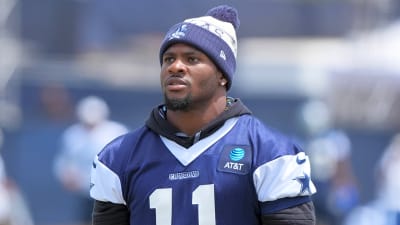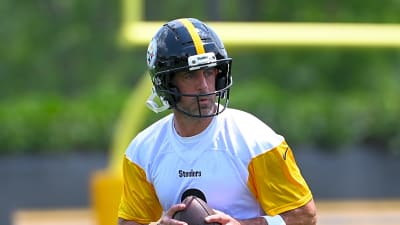
September 18, 2009, is a very memorable and controversial day for Toronto Maple Leafs fans of a certain age. It’s the day of a significant trade that changed two franchises. The Leafs traded a 2010 first-round pick, a 2010 second-round pick, and a 2011 first-round pick to the Boston Bruins in exchange for Phil Kessel.
Kessel, who the Bruins selected with the No. 5 overall pick in the 2006 draft, had just completed his entry-level contract following the 2008–09 season and was unable to work out a contract extension with the Bruins due to salary cap issues.
A minor hurdle
The Leafs, under General Manager Brian Burke, were one of the teams most interested in acquiring Kessel. However, it was more likely that it was through an offer sheet. This was similar to the Dustin Penner situation when Burke was GM of the Anaheim Ducks.
An offer sheet occurs when a restricted free agent, who is not currently under contract with a team, receives a contract offer from another team. If the offer sheet is signed, the player’s current team is allowed to match the offer, but they have a limited amount of time to do so.
In the Kessel situation, the Leafs didn’t have the necessary draft picks to offer Kessel an offer sheet. Because if Boston hadn’t matched it, the Leafs would’ve been penalized and forced to give up draft picks.
What followed was a series of trades, aimed explicitly at acquiring draft picks to make an offer to Kessel. One of which gave the Chicago Blackhawks a second-round pick, which was used to select Brandon Saad. Saad went on to win two Stanley Cups with the Blackhawks.
A controversial shake-up
Once they had the necessary amount of picks, the Leafs offered Kessel a five-year contract worth $5.5M per year. The deal stirred up some controversy because the 2009–10 Leafs weren’t going to be very good, even with the addition of Kessel.
As a result, the 2010 first-round pick became the second overall pick. The Bruins used it to draft Tyler Seguin. The 2010 second-rounder sent to Boston was used to draft Jared Knight. Knight never played a game in the NHL. The Bruins used the 2011 first-round pick to draft Dougie Hamilton.
The Bruins went on to win the Stanley Cup in 2011.
Phil The Thrill
It’s a lot to give up, obviously, but the criticism the Leafs got is overstated a little bit. Yes, Hamilton and Seguin proved to be very successful in Boston, achieving a great deal of success. However, some people forget how good Kessel was for the Leafs.
Kessel was still only 22 years old at the time of the trade and was on his way to becoming one of the top offensive players in the NHL. When a trade like that happens, there will be a significant return. For most of the Kessel era, the Leafs wouldn’t have been much better with Seguin and Hamilton anyway. It took a while for Seguin to match Kessel’s offensive production, so the criticism didn’t come right away.
From 2009–10 until 2014–15, Kessel had more points than Seguin every year except two: 2013–14 and 2014–15. For the first four years after the trade, it’s pretty much impossible to argue that Toronto wasn’t getting more out of Kessel than it would have been able to get out of Seguin/Hamilton.
Kessel put up more production and was a better player. Also, he was still young enough to be a key part of the core of a championship contender. It’s not his fault that management failed to build a contender around him.
During the Kessel era, the Leafs made the playoffs once, in 2012–13. Every Leafs fan will remember precisely where they were for Game 7 of the first round against the Bruins. The way it worked out made the price look higher, and the fact that the Bruins won a cup doesn’t make it any better.
Boston throws it away
After three very promising years from Seguin and a Stanley Cup, the Bruins signed him to what looked like a great contract: A six-year extension worth $5.75M per year. Ahead of the 2012–13 season, it looked like Seguin was a Bruin for the foreseeable future.
However, Seguin was traded to the Dallas Stars in July of 2013—a trade that Bruins fans are still angry about to this day.
Bruins fans will argue that they still won the trade, as Boston went on to win a Stanley Cup in 2011 after the Kessel trade. However, neither Hamilton nor Seguin was a major contributor to that run. Seguin was a rookie and recorded just 22 points during the regular season, playing in only 13 playoff games. He recorded just one point in his final 11 games that postseason. Hamilton wasn’t even a member of the organization at that point and would not be drafted by the team until two weeks after their Stanley Cup win.
Looking back, the Bruins had a team ready to win before they traded Kessel. There’s no way to know if they would’ve won a cup anyway, but they would’ve had a good chance.
Phil Kessel was traded to the Pittsburgh Penguins in July 2015 after the first year of an eight-year contract worth $8M a year. Kessel would go on to win back-to-back Stanley Cups with the Penguins in 2016 and 2017.
Ten years later, it appears that the real winner of the original Kessel trade was the Stars. Because the Leafs didn’t have much team success in the Kessel era, and Boston probably could’ve won anyway if they kept Kessel.
More must-reads:
- NHL coaches who have the best chance of success with their new teams
- Surprising update emerges about Jayson Tatum's recovery
- The '250-strikeout MLB seasons' quiz
Breaking News
Trending News
Customize Your Newsletter
 +
+
Get the latest news and rumors, customized to your favorite sports and teams. Emailed daily. Always free!








